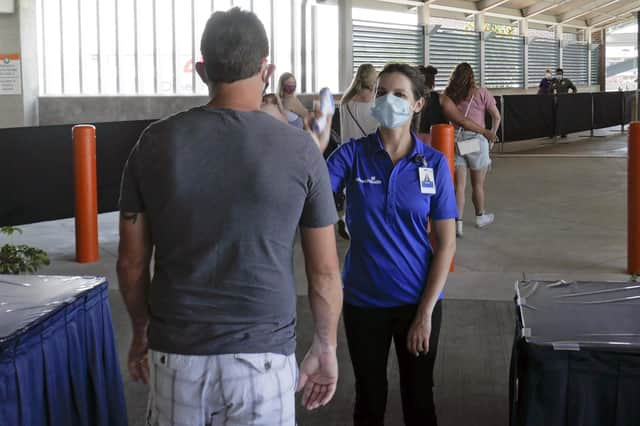Coronavirus lockdown: Why Nicola Sturgeon is right to be cautious – Professor Sir Harry Burns


The first forecast many will have looked to in the morning will have been the weather forecast. For those working from home during lockdown, the good weather has been an unexpected bonus. Can I work outside? Is it weather for shorts and a T-shirt?
The more important forecast, however, is the one based on trends of Covid-19 cases. The number of people testing positive has fallen consistently over the past few weeks and there is no doubt that the policies which have kept people apart have been effective. Perhaps the UK should have locked down sooner. We should certainly have had border controls in place before quarantine was introduced. However, trends are going in the right direction and we are getting control of the infection.
Advertisement
Hide AdAdvertisement
Hide AdInevitably, the evidence that we are winning the battle has increased pressure to lift regulations that have caused the decline in infections. Has the decline been enough to reduce recommended distancing from two metres to one? Are we on the way to normality?
The signs from other places are not good. In the US, the President, obviously an expert on the disease, urged Republican Governors to lift restrictions in their states. The outcome of that process is that three of those states are now reporting a second wave of cases. Arizona, Texas and Florida are once again seeing over 2,000 cases a day.
Some of that increase may be due to more testing taking place. But, even allowing for that, the results show evidence of increased transmission of the virus. The number of hospital admissions has increased, and the percentage of people being tested who have a positive result now is double the number testing positive in May when restrictions were in place. Florida’s Governor dismisses suggestions that reopening bars and restaurants has contributed to the increased transmission of virus. He says he is not shutting them down because, apparently, “you have to have society function”. What this signalled is that he thinks the economy is more important than people’s lives.
Similar noises are being heard in the UK. Politicians and those whose businesses depend on footfall suggest we end the two-metre rule. Some academics suggest evidence for two metres is “weak”. Actually, it’s not as simple as that. Infection risk is more complicated than distance. Factors which influence risk of infection include the length of time you are close to an infected person, the airflow in the space you both occupy and whether or not the infected person is wearing a mask. Outdoor spaces for socialising are much safer than indoor spaces.
Will we see a “second wave” if we lift current restrictions? Certainly, the US experience may be important. However, most evidence for waves of infection come from influenza pandemics. In 2009, infections during the swine flu outbreak declined in summer before picking up again in winter. The same pattern was observed in the 1918 flu pandemic which killed more than 25 million people.
However, Covid-19 is not behaving like an influenza virus. Sporadic clusters seem to be the way it is spreading rather than in waves. Widely available and effective testing with isolation of cases and their contacts is the way to contain it if businesses are to reopen.
The First Minister is absolutely correct in her cautious approach to easing restrictions. We do not yet know how Covid-19 might linger in the population to re-emerge just when we thought we had won. We may soon learn more following the lifting of restrictions in the UK. She is prudent to wait.
Professor Sir Harry Burns is director of global public health at Strathclyde University
A message from the Editor:
Advertisement
Hide AdAdvertisement
Hide AdThank you for reading this article on our website. While I have your attention, I also have an important request to make of you.
With the coronavirus lockdown having a major impact on many of our advertisers - and consequently the revenue we receive - we are more reliant than ever on you taking out a digital subscription.
Subscribe to scotsman.com and enjoy unlimited access to Scottish news and information online and on our app. With a digital subscription, you can read more than 5 articles, see fewer ads, enjoy faster load times, and get access to exclusive newsletters and content. Visit www.scotsman.com/subscriptions now to sign up.
Our journalism costs money and we rely on advertising, print and digital revenues to help to support them. By supporting us, we are able to support you in providing trusted, fact-checked content for this website.
Joy Yates
Editorial Director
Comments
Want to join the conversation? Please or to comment on this article.